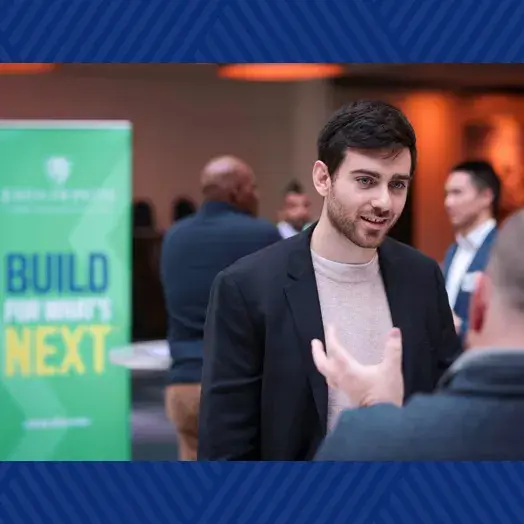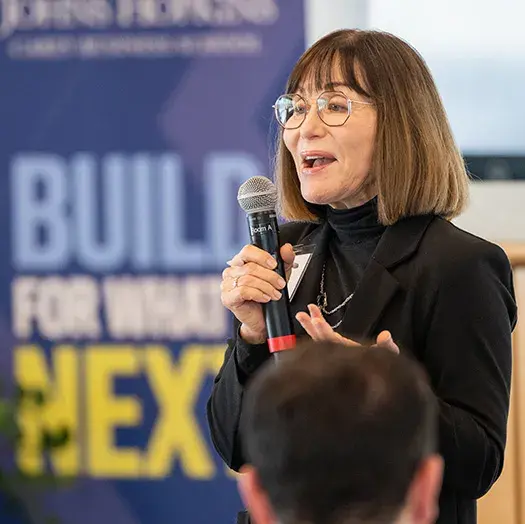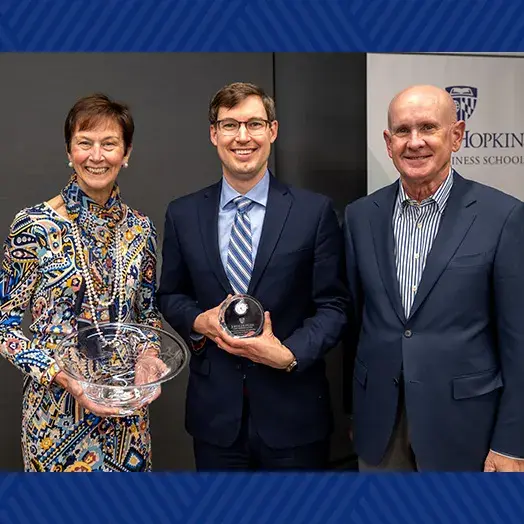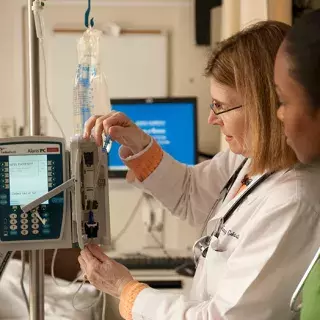Explore the Latest News at Carey
research
Taken for a ride: Uber and Lyft users overpay when they don’t price check
Instead of checking Uber or Lyft, check Uber and Lyft.
December 12, 2025
student experience
Inaugural Business of Health Week highlights how Carey makes career connections for students
Carey students are uniquely prepared and motivated—through a rigorous curriculum, hands-on opportunities, and specialized career connections like Business of Health week—to enter the workforce and transform it.
December 11, 2025
research
Professor Emeritus Kathleen Sutcliffe leads the way in uncertain times
Professor Emeritus Kathleen Sutcliffe blazes a trail for a generation of high-stakes organizational leadership scholars.
December 04, 2025
alumni success
Carey alum Emmanuel Elorm Nortey-Adom earns FortyUnder40 award
Emmanuel Elorm Nortey-Adom (MPH/MBA ’25) is honored with Ghana’s FortyUnder40 Award for his contributions to advancing health systems innovation and chronic disease prevention.
December 03, 2025
Faculty
Christopher Myers named inaugural Peetz Family Professor of Leadership
Myers, described as “the ideal academician,” is the co-founder and faculty director of the Center for Innovative Leadership and is the inaugural Peetz Family Professor of Leadership.
November 14, 2025
research
U.S. employee well-being hit new low in 2024
Survey data shows that while well-being of managers and senior leaders has risen, their employees’ well-being has declined.
November 12, 2025
alumni success
David Vahos leads PECO with energy for tomorrow
As a first-generation American with a background in accounting who is now the head of a major U.S. regional engineering organization, David Vahos (MBA ’01) is a lesson in dedication to achieving your dreams.
November 04, 2025
Faculty research
The Tilly Norwood problem: When AI innovation turns into abdication
Traditional performers own their image and likeness—rights protected by publicity law. AI actress Tilly Norwood scrambles this framework entirely. Professor Stacey Lee examines how AI fundamentally disrupts professional contractual relationships, the...
October 31, 2025
student experience // June 24, 2021
Student organizations pivot to prove virtual learning is a positive
admissions // November 03, 2020
Does using the GMAT/GRE waiver help or hurt my application?
admissions // September 08, 2020
Deciding between three business of health programs
admissions // July 15, 2020
Financing Your Online MBA
Explore Upcoming Events
December 15, 2025
2:00pm - 3:00pm
Carey Online
Join Tao Chen, PhD, Academic Program Director for Specialized Masters in Marketing, for a live Q&A exclusive to candidates admitted to the program. Dr...
December 16, 2025
12:00pm - 1:00pm
Carey Online
You’ve started your application – now let’s make sure it’s as strong as possible. Join our Admissions team for a focused, practical session designed...
Want to Discover More?
From cutting-edge faculty research to programs built for modern careers, explore all of Carey Business School.











